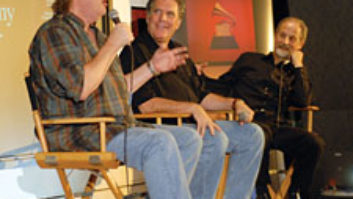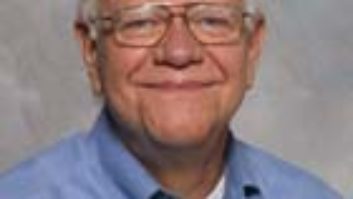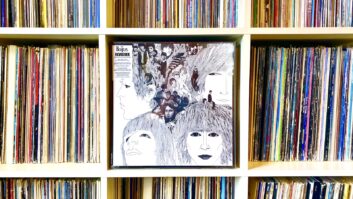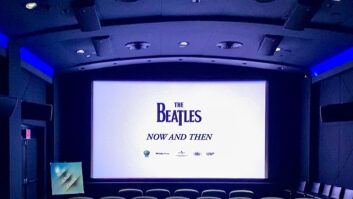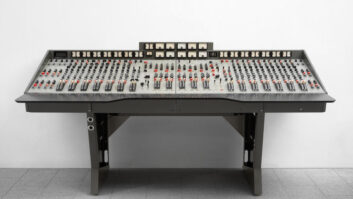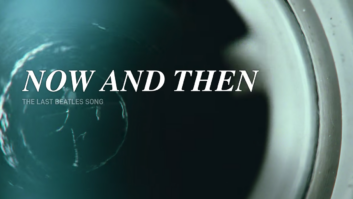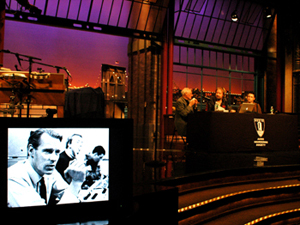
Pictured on the dais are, from left, Malcolm Addey, Brian Kehew and Kevin Ryan. In the screen are (L-R) George Martin, Geoff Emerick and Richard Lush.
As if any additional incentive were needed to live near Manhattan, the AES New York Section provided yet another with a packed special presentation on December 3, 2008. The featured event was a panel discussion by Recording the Beatles authors Kevin Ryan and Brian Kehew at a most appropriate venue: the Ed Sullivan Theater on Broadway and 53rd Street.
Known today as being the home of The Late Show With David Letterman, the presenters on this particular evening underscored the theater’s connection to one of the most significant events in modern musical history: It was the site of The Beatles’ legendary live debut appearance on The Ed Sullivan Show, February 9, 1964.
Ryan and Kehew were joined onstage by a living link to the Fab Four, engineer Malcolm Addey, who started at Abbey Road and stood as a star hitmaker for record label EMI at the time of The Beatles’ arrival. As the evening progressed, the authors made it clear that one of their primary objectives with the book and live appearances was to dispel the many myths that surround The Beatles’ recording sessions. The Number One myth—all Abbey Road studio personnel wore lab coats—was quickly dispelled by Addey (only the maintenance engineers donned them), who frequently provided a comic counterpoint to the reverent subject matter.
While a great many entertaining stories were told, there were also solid audio engineering tips for the audience to apply to their own work. Most practical was when Ryan played back audio examples of the before-and-after of George Martin’s famed half-speed recording techniques on songs such as “In My Life” and “Being for the Benefit of Mr. Kite.” He observed that although this process is still available to engineer/producers today, it remains underused, serving as a solid reminder that we can still channel the recording wisdom of The Beatles as we work within our DAWs.

